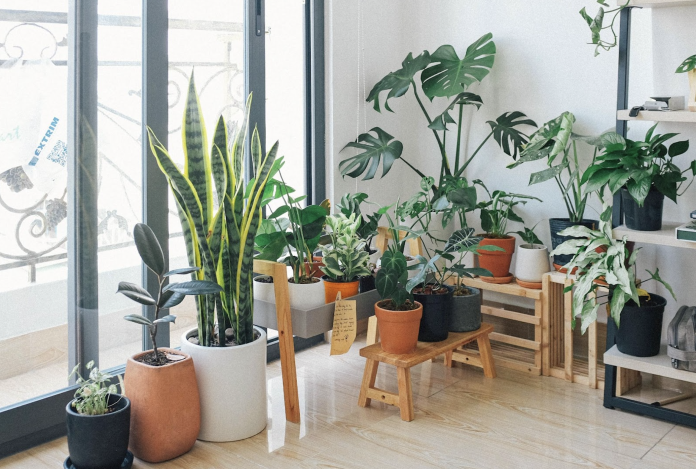Green-thumbed Brits are being advised on how to ensure their houseplants survive the seasonal changes during winter.
Experts from Gardening Express have identified the essential adjustments plant enthusiasts should make to provide an ideal environment for houseplants to thrive during colder months.
Although indoor plants grow in a climate-controlled environment, they can still be affected by the seasonal changes during autumn and winter.
Fluctuating temperatures, dry air and darker days can put a strain on the plants, but a bit of preparation ensures that the plants beat the winter blues.
As the days get shorter, plants don’t get as much sunlight and their growth rate slows down, which means that adjustments need to be made to the care routine in order to help them remain lush and healthy.
Chris Bonnett, the founder of Gardening Express said: “The biggest issues that indoor plants face during cooler months of the year are the lack of light and chilly temperatures.
“However, making small changes like relocating the plants to a brighter spot, adjusting the watering routine and improving humidity levels can go a long way in ensuring the survival of your green friends.
“Winter is the time for plants to rest, so in terms of watering and feeding they’re much more low-maintenance.”
Experts from Gardening Express have shared their top eight tips for keeping the indoor plants alive during winter:
- Reduce watering
Because there’s less sunlight during winter, plants are not as thirsty, so you can cut down on watering. Plants that required watering every week during summer, may now need to be watered only a few times per month or even less.
- Place plants near a window
Relocate plants near windows to utilise all the natural light you can. Just make sure that the window isn’t draughty and is clean enough to let plenty of light through. Rotate the plants a bit every week to ensure that they get even sunlight on all sides.
- Keep them warm
Most indoor plants thrive in regular household temperatures, so if you keep them in a 18 to 23 degree Celsius temperature range, they should be perfectly fine. Make sure to keep them away from both cold drafts and heat sources like radiators, ovens or fireplaces.
- Stop feeding
Since their growth slows down throughout the winter, plants don’t require feeding during that time. Give them a break until springtime when they’re ready to start growing actively again.
- Check for pests
Pests thrive in dry winter air, so take the time to inspect your plants regularly, looking under the leaves and along the stems as well. Remove the pests and damaged leaves and treat the plant immediately to prevent the infestation spreading to other plants as well.
- Raise humidity levels
Humidity levels drop during winter, so you may need to look into ways of increasing the humidity yourself to keep the plants healthy, as many houseplants thrive in damp, humid conditions. Keep the environment humid by clustering the plants together or put a humidifier near your plants.
- Dust the plants
Build up of dust will prevent sunlight from getting to the plants and during winter time it’s important to make sure that the plants get as much light as possible. Use a damp cloth to wipe off the foliage for maximum exposure to light.
- Don’t worry about a few dropped leaves
It’s perfectly normal for houseplants to drop some leaves as they’re adjusting to the new growing conditions. By shedding some leaves they’ll have less foliage to maintain when their growth rate slows down.

